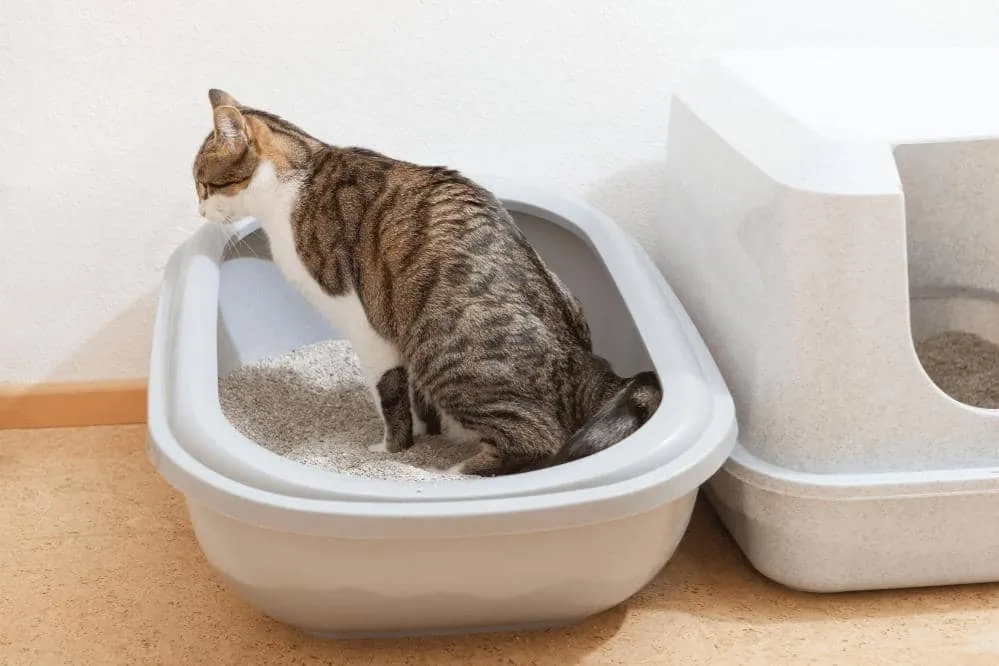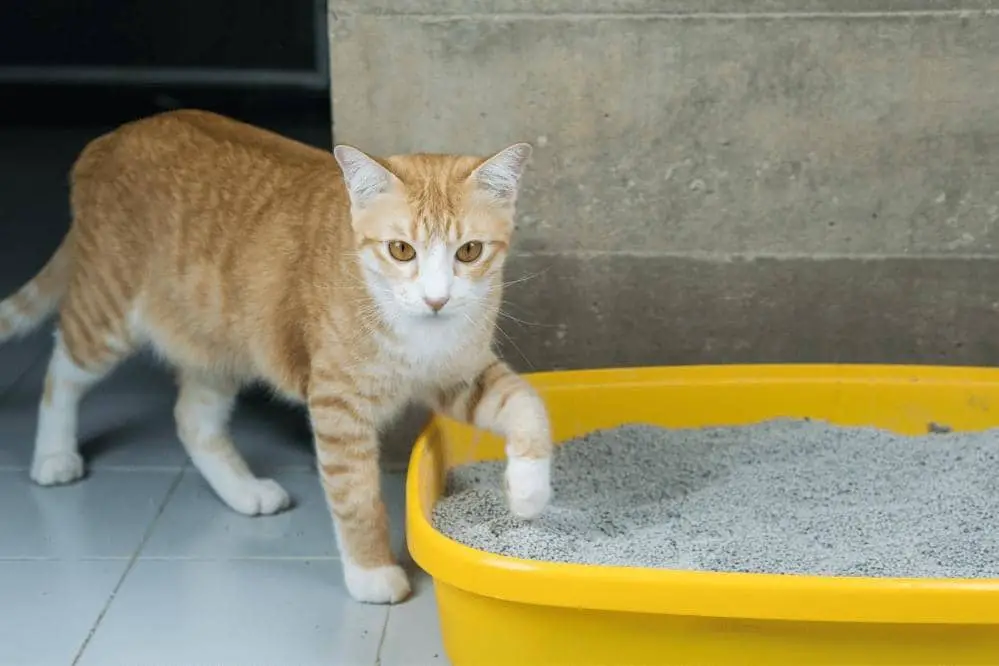How to Teach a Stray Cat to Use a Litter Box?

Taking on the task of training stray and feral cats is a massive undertaking and it requires a lot of dedication and patience. If you realize that part of adopting a stray cat is that the cat doesn’t know how to use the litter box, this means that you are naturally going to need to teach it how.
Unfortunately, the process for this can be a little bit different than teaching a kitten that you have adopted from the shelter. First things first; you are going to need to determine if the cat that you are trying to train is a feral or a stray, as the way you should approach this will be different depending on where the cat’s roots are.
Stray vs. Feral Cats and Litter Box Training
Many people use the words feral and stray to refer to cats who live outdoors and have no owners. While this is certainly true of both cats, there is a difference between the two that you will need to be aware of. Stray cats are cats who may not have an owner but who are accustomed to some degree of human interaction. This can be in the form of having a previous owner or it could be that the cat trusts people enough to interact with them on occasion even if the cat is a little bit skittish. Generally, stray cats are going to be far easier to litter train than feral cats. Depending on how open the cat is to learning, this can take a matter of days or weeks.
By comparison, feral cats are cats who have had no human interaction. These cats were born in a situation without any people and they were raised in the same type of environment. These cats are considered to be unsocialized, meaning that they do not know how to interact with people and may see people as predators or threats and will react to that accordingly. Trying to train a feral cat how to use the litter box is going to be much more difficult as you will first need to establish a sense of socialization and trust with the feral before you can begin trying to teach it. This process can take months, depending on the cat’s attitude toward you and what actions you take.
When it comes to using the litter box, there is a common trait between both feral and stray cats. Both cats have naturally not used a litter box before, although if you are working with a stray who used to have owners, it will be easy to bring back the cat’s old habits. Out in the wild and on the streets, there are no litter boxes for the cat to use. When you present a stray cat with a litter box, it is not going to understand its purpose and this is where the litter box training is going to come into play.
Litter boxes are designed to mimic what a cat would do out in the wild, only in a single localized place. You are going to need to use that fact, as well as your cat’s own natural instincts, to your advantage to try and help the cat learn that the litter box is where droppings go.
Blending the Lines Between Wild and Indoors
Adult cats who have never used a litter box are not going to connect the fact that this is where the droppings and deposits should go. You can, however, help your cat come to this connection on its own. Assuming that you have a litter box as well as some pellet litter that the cat seems to like (you may have to make several attempts to find a litter it likes, though pellet-type litter seems to be the most accepted for cats who are not used to litter boxes), you will want to consider adding something to help the cat associate the litter box with where droppings go.
You will want to try and find some soil and leaves from where the cat would typically relieve itself. If you do not know where the cat previously would eliminate, then you can usually just find any patch of soil and some leaves and use that. This will help the cat associate the litter box with what its purpose is, although you will still need to wait a bit before your cat develops this connection completely. Using soil and leaves from an area where the cat would frequently mark its territory will help tremendously.
Litter-Training the Cat
Next, you will want to give the cat some time to investigate the litter box. Remember that the litter box is something completely new and foreign to your stray cat so it may be wary of it at first. You should let the cat jump in and out of it, walk around it, and generally explore it in any way the cat pleases. You shouldn’t try to restrict your cat doing this or it may develop negative associations with the box and avoid it completely.
As the cat gets more used to the presence of the box, you will then want to help it further associate the box with what it will be used to do. About 25 minutes after your cat has finished a meal or after a session of play time, you will want to try and guide the cat toward the litter box. If the cat trusts you enough to carry it, you should carry the cat and place it in the litter box. From here, you will want to stir the litter, soil, and leaves around. Cats learn through imitation so if the cat sees you doing this, there’s a chance that the cat may follow suit and try it out, realizing that this has a similar texture and feel to where it would normally defecate.
And finally, you will want to provide positive reinforcement. While you shouldn’t watch the litter box constantly because cats enjoy their privacy, if you notice that your cat has successfully used the litter box, you should reward the cat in some way. For some cats, this may be with praise and pets. For others, it may be with extra food or a treat. You should praise your cat in a way that will help associate using the litter box with treats so that you can further reinforce the idea of using the litter box in its mind. Repeat these last two steps as needed before your cat begins using the litter box on its own and you will have a stray cat that is now litter-trained.



